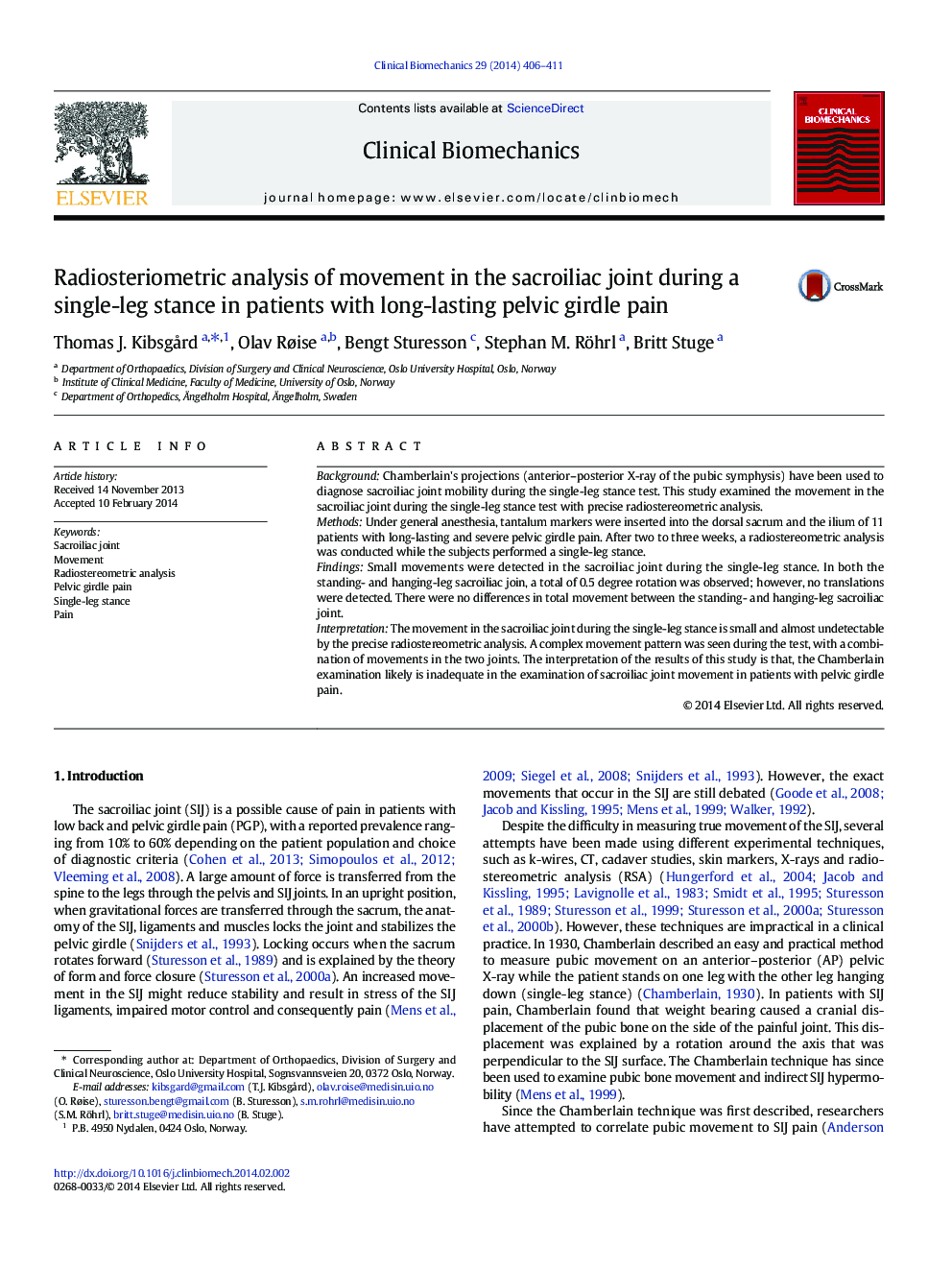| Article ID | Journal | Published Year | Pages | File Type |
|---|---|---|---|---|
| 6204847 | Clinical Biomechanics | 2014 | 6 Pages |
BackgroundChamberlain's projections (anterior-posterior X-ray of the pubic symphysis) have been used to diagnose sacroiliac joint mobility during the single-leg stance test. This study examined the movement in the sacroiliac joint during the single-leg stance test with precise radiostereometric analysis.MethodsUnder general anesthesia, tantalum markers were inserted into the dorsal sacrum and the ilium of 11 patients with long-lasting and severe pelvic girdle pain. After two to three weeks, a radiostereometric analysis was conducted while the subjects performed a single-leg stance.FindingsSmall movements were detected in the sacroiliac joint during the single-leg stance. In both the standing- and hanging-leg sacroiliac join, a total of 0.5 degree rotation was observed; however, no translations were detected. There were no differences in total movement between the standing- and hanging-leg sacroiliac joint.InterpretationThe movement in the sacroiliac joint during the single-leg stance is small and almost undetectable by the precise radiostereometric analysis. A complex movement pattern was seen during the test, with a combination of movements in the two joints. The interpretation of the results of this study is that, the Chamberlain examination likely is inadequate in the examination of sacroiliac joint movement in patients with pelvic girdle pain.
